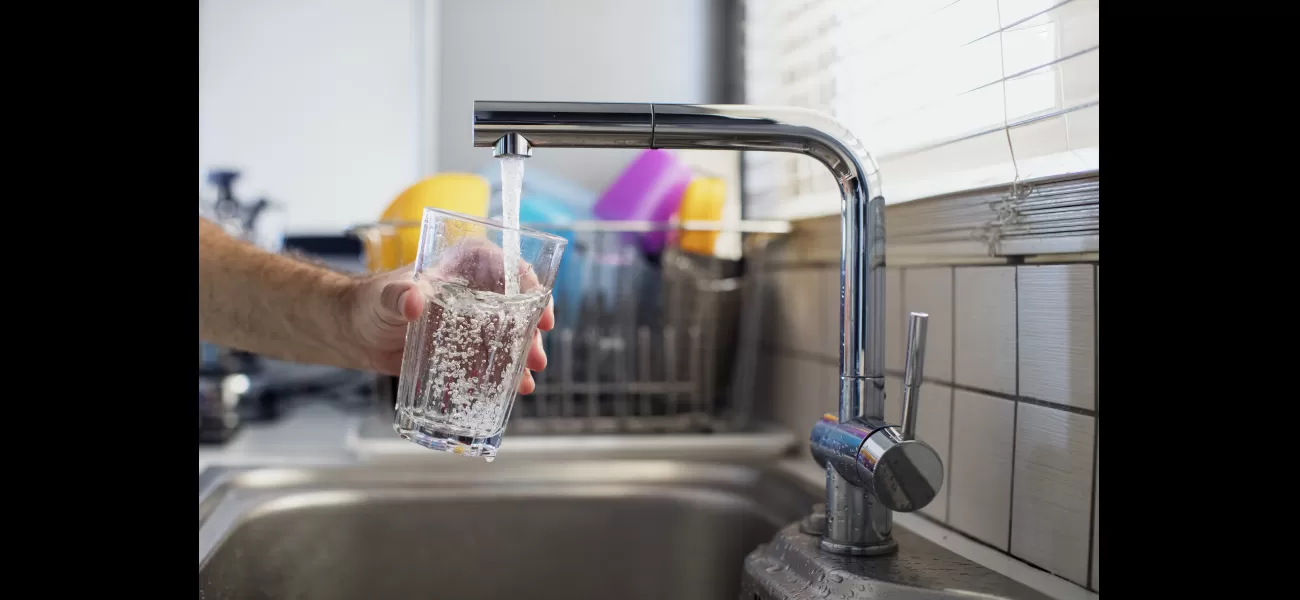Sydney Water has confirmed that drinking water contains harmful "forever chemicals," which can have long-lasting effects.
Water chemicals below safe levels for drinking according to Australian guidelines, so drinking water is safe.
August 20th 2024.

Sydney Water has confirmed that a small amount of cancer-linked chemicals have been detected in the water catchments of Sydney. However, these levels are well below what is considered safe for drinking water. In June, water testing revealed the presence of perfluoroalkyl and polyfluoroalkyl substances, also known as PFAS, at various filtration plants, including Warragamba, Prospect Reservoir, and Orchard Hills. While slightly higher levels were found at Cascade Dam in the Blue Mountains and North Richmond, they are still within the acceptable range.
PFAS chemicals have earned the nickname "forever chemicals" because they do not break down over time. The specific PFAS chemicals found in Sydney's water were perfluorooctane sulphonate, perfluorohexane sulphonate, and perfluorooctanoic acid. These man-made chemicals are commonly used in industrial appliances, as they are resistant to heat, stains, grease, and water. They can also be found in upholstery, paper coatings, cosmetics, and sunscreen.
Some may wonder if it is safe to drink tap water in Sydney. According to the National Health and Medical Research Council, the amount of PFAS chemicals detected is well below the recommended guidelines for safe drinking water in Australia. However, these guidelines are currently under review. It is worth noting that the United States has stricter guidelines for PFAS in drinking water, with a limit of 0.07 micrograms per litre for PFOS and PFHxS, and less than 0.56 µg/L for PFOA.
Dr. Jeremy McAnulty, the Director of Health Protection at NSW Health, assures the public that Sydney's tap water is safe to drink. He encourages people to drink tap water, stating that the results from water testing show levels below the recommended guidelines. He also explains that the stricter guidelines in the US could be due to their laboratories' ability to detect even minute amounts of chemicals in water.
The specific filtration plants where PFAS chemicals were detected include Cascade in Katoomba, where levels were higher, and North Richmond, Prospect, Warragamba, and Orchid Hills, where levels were lower. However, no PFAS chemicals were found at Woronora, Macarthur, Napean, or Illawarra filtration plants.
One may wonder if PFAS chemicals can cause cancer. While there have been studies linking high doses of PFAS to cancer in specific contexts, further research is needed to establish a clear link. The US National Cancer Institute states that most prior studies on PFAS require more investigation. In Australia, studies have shown a connection between PFAS contamination and health issues in other species, such as the platypus. Liver damage, immune system damage, low birth weight, birth defects, delayed development, and newborn deaths have all been linked to PFAS exposure in animals.
PFAS chemicals have earned the nickname "forever chemicals" because they do not break down over time. The specific PFAS chemicals found in Sydney's water were perfluorooctane sulphonate, perfluorohexane sulphonate, and perfluorooctanoic acid. These man-made chemicals are commonly used in industrial appliances, as they are resistant to heat, stains, grease, and water. They can also be found in upholstery, paper coatings, cosmetics, and sunscreen.
Some may wonder if it is safe to drink tap water in Sydney. According to the National Health and Medical Research Council, the amount of PFAS chemicals detected is well below the recommended guidelines for safe drinking water in Australia. However, these guidelines are currently under review. It is worth noting that the United States has stricter guidelines for PFAS in drinking water, with a limit of 0.07 micrograms per litre for PFOS and PFHxS, and less than 0.56 µg/L for PFOA.
Dr. Jeremy McAnulty, the Director of Health Protection at NSW Health, assures the public that Sydney's tap water is safe to drink. He encourages people to drink tap water, stating that the results from water testing show levels below the recommended guidelines. He also explains that the stricter guidelines in the US could be due to their laboratories' ability to detect even minute amounts of chemicals in water.
The specific filtration plants where PFAS chemicals were detected include Cascade in Katoomba, where levels were higher, and North Richmond, Prospect, Warragamba, and Orchid Hills, where levels were lower. However, no PFAS chemicals were found at Woronora, Macarthur, Napean, or Illawarra filtration plants.
One may wonder if PFAS chemicals can cause cancer. While there have been studies linking high doses of PFAS to cancer in specific contexts, further research is needed to establish a clear link. The US National Cancer Institute states that most prior studies on PFAS require more investigation. In Australia, studies have shown a connection between PFAS contamination and health issues in other species, such as the platypus. Liver damage, immune system damage, low birth weight, birth defects, delayed development, and newborn deaths have all been linked to PFAS exposure in animals.
[This article has been trending online recently and has been generated with AI. Your feed is customized.]
[Generative AI is experimental.]
0
0
Submit Comment





